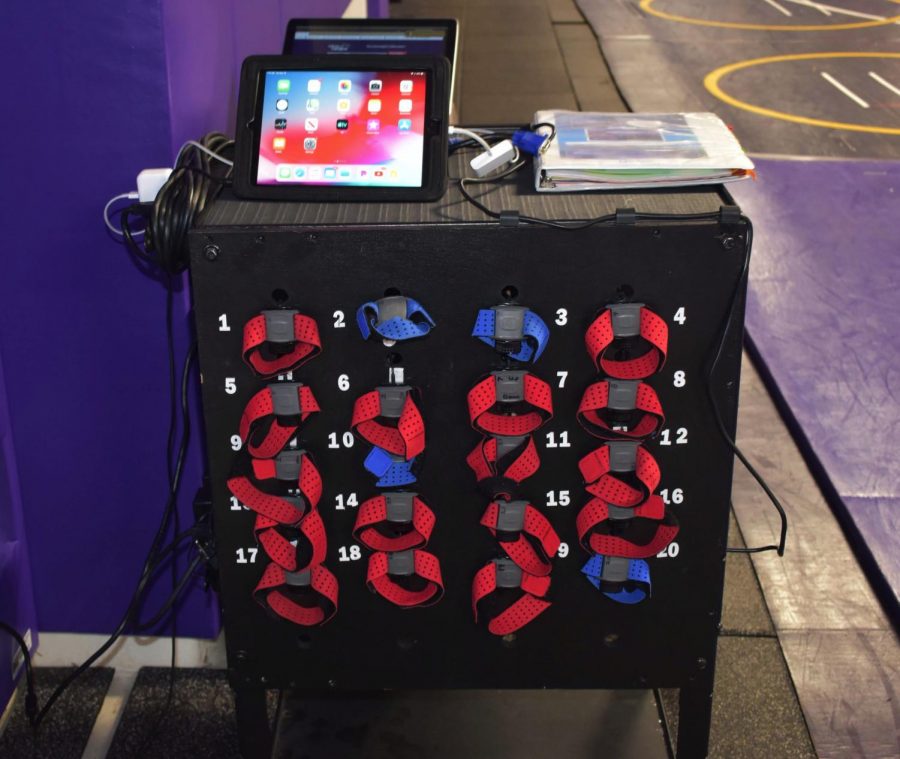It Hurts My Heart
December 10, 2019
During the 2019-2020 school year, Physical Education students in tracks one through five will wear heart rate monitors in order to track individual performance. Many students complete class with a heart rate above 150 beats per minute for a large portion of their workout. Many athletes including swimmers, cross country runners and wrestlers struggle to stay in or above the “moderate zone”, or above 135 bpm.
Heart rate monitors were purchased by the school in 2016 in an effort to track the progress of students in P.E.. The idea was spearheaded by instructional coach Isaac Rodenburg, along with P.E. teachers Dan Mennen and Deb Nicholson. “The whole purpose of this is that we are trying to improve the level of cardiovascular health,” P.E. Teacher Dan Mennen said. Each heart rate monitor costs about 100 dollars, and each set costs around $5,000. The initial set was bought with a grant through the Johnston Community School Foundation. The last four sets have been purchased through the district.
The “gold standard” in terms of cardiovascular health is set by the American Heart Association. These standards are what the rigor and duration of P.E. classes are based off of. There are two suggestions for aerobic activity. The first is 30 minutes of moderate intensity cardio, five days a week. The second is 25 minutes of vigorous activity three days a week.
The data from the heart rate monitors are used to determine a student’s grade in the participation category as well as the skills assessment category. Participation is measured by how active the student is and how one’s heart rate fluctuates during the aerobic activity. A student’s skill is measured during the assessment. An assessment could be a number of different activities. The activity and the rubric is unique to each teacher, as there is not a department wide standard for the heart rate monitors.
One example of an assessment could be a workout. In this workout, a student may have to stay in or above the “moderate zone” for 20 or more minutes to be proficient. The student will then be graded off of a rubric specific to each teacher.
Students such as Alek Mcgaughy ‘22 claim that grading a student based off of rate monitor data is unfair to students that are of good health. “You get a grade based off of a set heart rate,” Mcgaughy said. “For me as a swimmer, I have one of the lowest heart rates out of anybody,” “That is what our bodies are trained for, to take in as little oxygen as possible.” Mcgaughy swims for the Varsity men’s swim team.
Moving forward, the P.E. department aims to incorporate the heart rate monitors an increasing amount moving forward.






Jackson Mueller • Jan 6, 2020 at 8:45 am
Hank Lucas is a generational literary mind, and his work should be on the front of every issue. I have never felt prouder of the black and white than I am after reading this. Absolutely top notch journalism from Hank Lucas. Thank you.